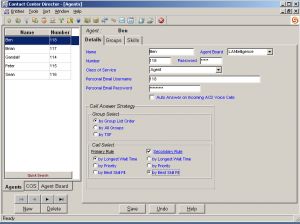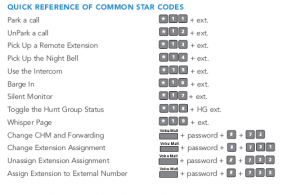ShoreTel has a family of new media gateways. The more interesting switches are referred to as SGV switches. There is an SG50V and an SG90V that differ only in the number of FXO and FXS ports that they support. What makes these switches (i.e. media gateways) so interesting is that they have a LINUX kernel built in to support a Compact Flash Card which enables localized Automated Attendant and Voice Mail. In the world of ShoreTel’s “single image solution” we have the concept of a DVM (e.g. Distributed Voice Mail sever. The DVM are typically deployed at remote sites and, as explained in previous blog, provide for a level of resiliency (not redundancy) in your multi-site solution. More importantly, as the DVM enables Voice Mail and Automated Attendant to be localized at a remote site, it keeps these bandwidth intensive functions off your very expensive WAN.
For example, if I have a New York HQ site with users, media gateways and workgroup services; I might have a North Carolina remote site with a DVM, media gateways and users. Workgroups are currently NOT a distributed service, so any workgroup functions will require the HQ server. However, in North Carolina I can assign the users at that site to Voice Mail boxes on the DVM at that site. Callers to telephone lines that terminate on media gateways at that remote site will be answered with an Automated Attendant that lives on that remote DVM, eliminating the need to stream that media across the very expensive WAN. (Note: historically the media stream was G711 as it originated from the server regardless of the Inter-site codec. Recent release of ShoreTel enable a HQ media gateway to proxy the media stream enabling the use of the lower bandwidth Inter-site code). Should the DVM at the remote site fail, the HQ server would take over for the remote site. In this way VM and AA are still provide to the remote users.
The new SG50V and SG90V are typically used as replacements for or instead of a DVM at a remote site. The question arises as to what would happen if you added an SG50V or SG90V to a remote site under the control of a DVM? One would argue that it would make no sense to install these media gateway in that scenario. In the ShoreTel architecture it is important to note that DVM’s fail upward. For this reason we might install the SGV media gateway as a new site under the remote site. So in this example we might install a new site under North Carolina and put the SGV media gateway in that new site. Then we might move all the users at the North Carolina site to the new SGV media gateway for voice mail and automated attendant. In this way, the SVG should it fail, would have its services picked up by the North Carolina DVM; which in turn should it fail, would have all services picked up by the HQ server.
The new SGV switches are very interesting building blocks for the ShoreTel architecture and should be studied in some detail. They also might indicate a move by ShoreTel away from both Microsoft and VxWorks. This is only conjecture on my part and not based on any fact other than that we which can all observe. ShoreTel has dropped the Microsoft Access Database in favor of the MySQL database engine. Clearly this could be just a cost cutting move. However, the SGV switches, do not have VxWorks, they have a Linux kernel. Taken together these may in fact be an indication of a product road map that is moving steadily toward a total Linux based solution. (Click here if Video does not load).
ShoreTel Linux Based Voice Switches



